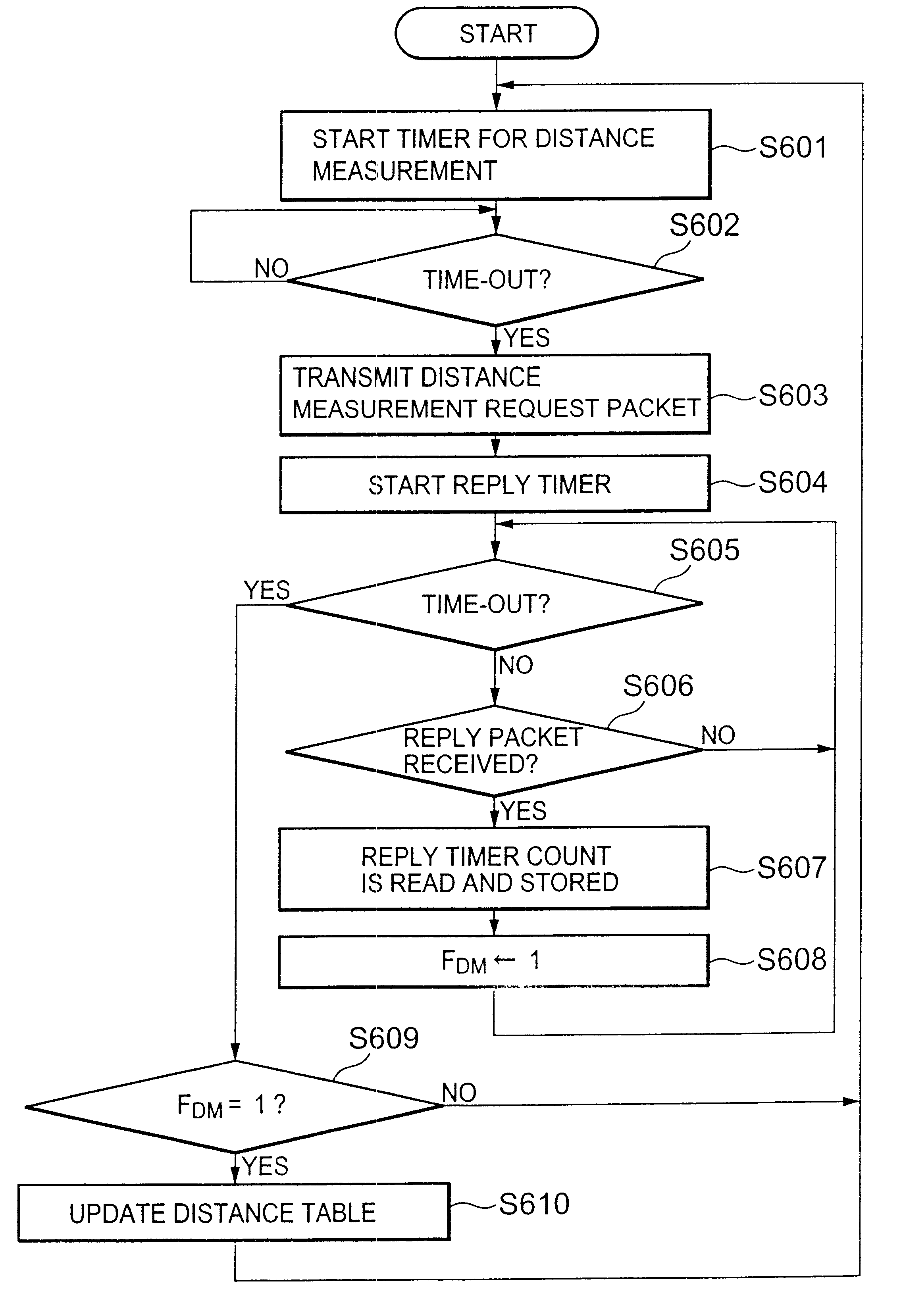Multicast communication device and method
a multicast communication and communication device technology, applied in the field of network systems, can solve the problems of inability to provide sufficiently efficient multicast transmission of multicast schemes, and the multicast route generated by the steps s705-s710 is not uniform
- Summary
- Abstract
- Description
- Claims
- Application Information
AI Technical Summary
Benefits of technology
Problems solved by technology
Method used
Image
Examples
example-2
As shown in FIG. 10, consider the case where a failure occurs between the multicast communication devices G and L. In this case, the multicast communication device C, when receiving a multicast packet from the multicast communication device A, refers to the distance table of its own and selects the destination G having the shortest distance from the destinations G, H, K, and L conveyed by the received multicast packet. Further, the multicast communication device C refers to the distance table of the multicast communication device G and selects the destinations H and K having the shortest distance from the destinations H, K, and L, and then selects the destination L by referring to the distance table of the multicast communication device H. In this way, the multicast routes determined by the multicast communication device C are generated as follows (see FIG. 10):
e) C.fwdarw.G.fwdarw.H.fwdarw.L; and
f) C.fwdarw.G.fwdarw.K.
It is the same with the multicast communication device G which h...
example-3
After the multicast communication device A determines the multicast routes A.fwdarw.B and A.fwdarw.C, the respective groups of the multicast communication devices B and C are produced as mentioned above. In the grouping process, if the grouping of the multicast communication device C is performed before that of the multicast communication device B, then the multicast communication device E belongs to the group of the grouping of the multicast communication device C.
As shown in FIG. 11, therefore, the multicast routes are generated as follow:
i) A.fwdarw.C.fwdarw.E;
j) A.fwdarw.C.fwdarw.G.fwdarw.H;
k) A.fwdarw.C.fwdarw.G.fwdarw.K;
l) A.fwdarw.C.fwdarw.G.fwdarw.L; and
m) A.fwdarw.B.
It should be noted again that only multicast routes, A.fwdarw.B and A.fwdarw.C, are determined at this stage and the following routes to E, G, H, K and L are not determined but generated by grouping under B and C. The respective multicast communication devices downstream from the multicast communication device A...
PUM
 Login to View More
Login to View More Abstract
Description
Claims
Application Information
 Login to View More
Login to View More - R&D
- Intellectual Property
- Life Sciences
- Materials
- Tech Scout
- Unparalleled Data Quality
- Higher Quality Content
- 60% Fewer Hallucinations
Browse by: Latest US Patents, China's latest patents, Technical Efficacy Thesaurus, Application Domain, Technology Topic, Popular Technical Reports.
© 2025 PatSnap. All rights reserved.Legal|Privacy policy|Modern Slavery Act Transparency Statement|Sitemap|About US| Contact US: help@patsnap.com



